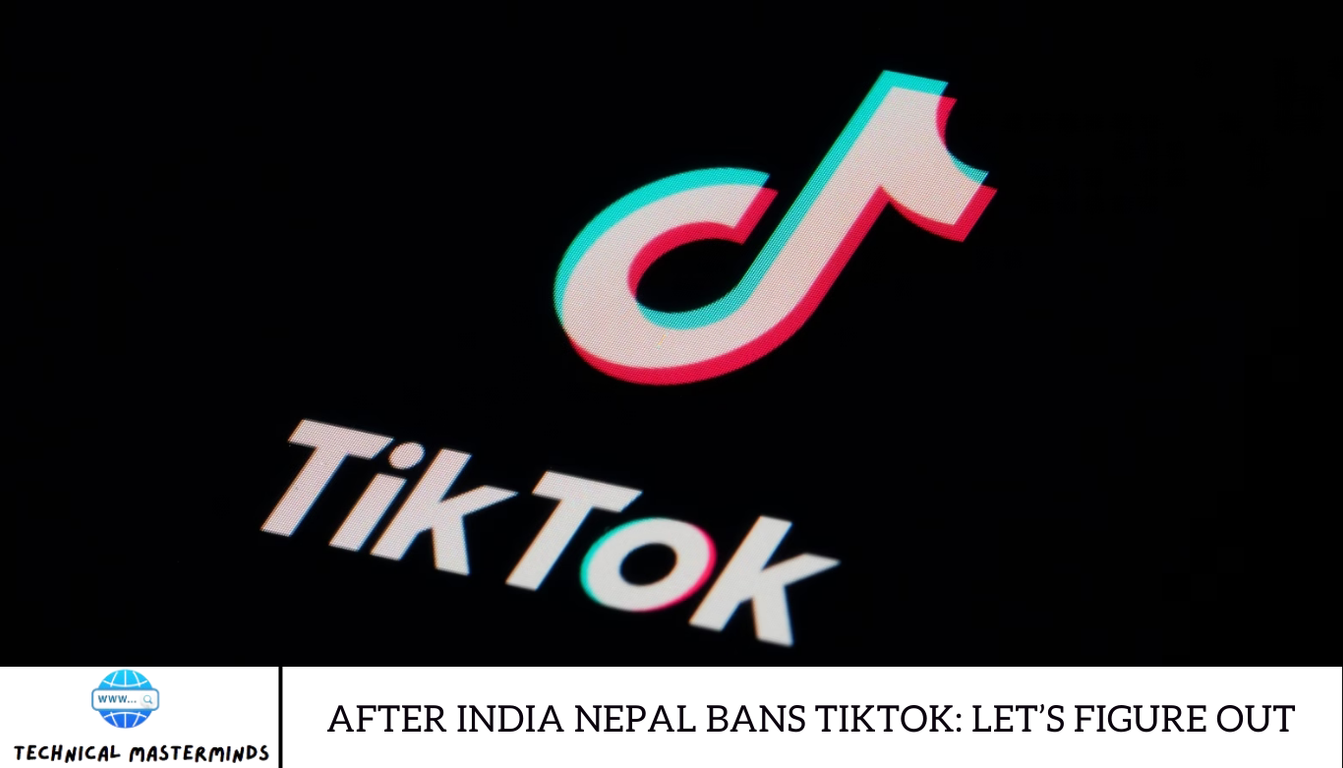Recent bans on TikTok by India and Nepal have sparked significant discussions and debates globally. Concerns over national security, data privacy, and the spread of misinformation drove these decisions. As TikTok, owned by the Chinese company ByteDance, became immensely popular among users, the bans have profound implications on social media usage and geopolitical relations in the region.
This analysis will explore the reasons behind the bans, their impact on users and the tech industry, and the broader geopolitical context. We’ll also explore potential developments and how other countries might respond to similar concerns.
Nepal Bans TikTok: What You Need to Know
On November 13th, Nepal officially bNovember 13th ,iting concerns over the platform’s impact on social harmony. During a cabinet meeting attended by key government executives, the decision reflects growing unease over TikTok’s role in spreading hateful content.
Critical Reasons Behind the Ban
Nepal’s government, led by Minister for Communications and Information Technology Rekha Sharma, pointed to TikTok’s failure to curb malicious content as a primary reason for the ban. Sharma emphasized the urgency of the decision, revealing that over 1600 cybercrime cases related to TikTok had been registered in the country. The immediate directive to telecom authorities led to the rapid implementation of the ban.
Regulatory Context
This action follows Nepal’s recent rule requiring social media companies to establish liaison offices within the country, aiming for better oversight and regulation of online platforms.
Global Perspective: Increasing Scrutiny of TikTok
Nepal joins a growing list of countries taking action against TikTok. Belgium, Canada, Taiwan, and various U.S. states have banned the app on government devices over security concerns. Pakistan has also repeatedly banned TikTok, though it lifted the bans after receiving assurances about moderating content.
Despite these controversies, TikTok remains a trailblazer in short-form video content, inspiring similar features on platforms like Instagram and YouTube.
TikTok’s Reaction and Public Response
TikTok has consistently dismissed such bans as “misguided” and based on “misconceptions.” However, criticism from figures like Gagan Thapa of the Nepali Congress suggests that the ban may be perceived as an infringement on freedom of speech.
Ongoing Debate
The bans in India and Nepal underscore ongoing global concerns about TikTok’s societal impact and potential security risks. The debate is far from settled, with divided opinions on whether such measures are justified.
As Nepal enforces this ban, the world watches to see how other nations will handle the challenges posed by this influential social media platform. What are your thoughts on TikTok’s impact? Do you support Nepal’s decision or think TikTok should remain unrestricted? Share your views in the comments below!
Why Did India Ban TikTok?
In June 2020, India made headlines by banning TikTok, a popular app by the Chinese company ByteDance. This decision came on the heels of a deadly military clash along the India-China border, leading to a significant deterioration in bilateral relations. Along with TikTok, India banned numerous other Chinese apps, marking a low point in the ties between the two nations.
The Indian government cited security concerns and the need to protect privacy as primary reasons for the ban. This move resonated with the Indian public, who largely supported the government’s decision.
Digital policy expert and MediaNama founder Nikhil Pahwa explained, “The message from the government was, ‘How can we allow Chinese companies to do business in India when we’re in the middle of a military standoff?’” He also noted that India had already started restricting Chinese investments before the ban. “To date, India has banned over 500 Chinese apps,” Pahwa added.
User and Creator Reactions
At the time of the ban, India had about 200 million TikTok users, making it TikTok’s largest market outside of China. The company also employed thousands of Indians. In the aftermath, TikTok users and content creators had to find new platforms. Google quickly launched YouTube Shorts, and Instagram introduced Reels, mimicking TikTok’s short-form video format.
“These companies captured most of the market that TikTok had vacated,” Pahwa said. The transition was bittersweet for creators like Winnie Sangma, who shifted to Instagram and amassed 15,000 followers. “I am making money from it, but the experience isn’t how it used to be on TikTok,” he lamented.
Comparing the U.S. and India’s Approaches
The U.S. has also scrutinized TikTok, but its approach has been different. The U.S. gave ByteDance nine months to sell TikTok to avoid a ban, a process expected to face legal challenges and delays. In contrast, India’s ban was swift, with companies given a short window to address privacy and security concerns before a permanent ban was enforced by January 2021.
“The situation in the U.S. is different,” Pahwa noted. “TikTok decided not to go to court in India, but the U.S. is a bigger revenue market for them.” He also pointed out that American free speech protections complicate the U.S. ban compared to India’s straightforward approach.
Broader Implications and Global Trends
As Chinese apps proliferate globally, Pahwa believes countries should reduce their dependence on Chinese technology due to potential national security risks. Afghanistan, Nepal, and Pakistan have also banned TikTok, and many European countries impose restrictions on the app.
“Chinese intelligence law and its cybersecurity law can allow Chinese apps to work in the interest of their security. That creates a situation of distrust and becomes a national security risk for others,” Pahwa explained. He suggested that democratic countries should have different rules compared to authoritarian regimes, where companies may act as extensions of the state.
The Rise of TikTok in Nepal
As of January 2023, Nepal had 15.85 million internet users out of a population of 30.55 million. Of these, 12.60 million were active on social media, with Facebook being the most popular platform, boasting 11.85 million users.
Launched in August 2018 by Beijing-based ByteDance, TikTok quickly gained popularity for its ability to deliver optimized short-form video content tailored to users’ preferences. Critics argue that the app’s AI and algorithms are addictive and unethical. With 1.218 billion global users, TikTok ranks sixth among all social media platforms.
TikTok has experienced tremendous growth, becoming a dynamic space for creators, influencers, and businesses. Although there is no official figure for TikTok users in Nepal, experts estimated around 2.2 million users as of 2022. A 2022 Sharecast Initiative Nepal survey involving 5,582 respondents revealed that 56 percent of the sample group used TikTok.
Increased Control Over Social Media
On November 9, 2023, Nepal introduced 9ive on the Operation of Social Networking 2023, a 15-point rule aiming to regulate social media through administrative measures. The directive mandates that international social media platforms establish a liaison office in Nepal or appoint a focal person within three months. Additionally, these platforms must register with the Ministry of Information and Communication Technology, with non-compliance risking a ban in the country.
As internet use grows, online harassment has also increased. In July, a person from Jhapa District, Koshi Province, was arrested for creating and publishing indecent TikTok videos featuring the president and prime minister. Moreover, over 200 police personnel were penalized for making TikTok videos in uniform. The government’s immediate concern reportedly revolves around Durga Prasad, a former opposition party member and businessman, who has used TikTok to slander mainstream parties and advocate for the reinstatement of a Hindu monarchy in Nepal.
While Nepal has legal measures for online libel, slander, and defamation, including the National Penal Code 2017 and the Libel and Slander Act 2016, most accused individuals face charges under Section 47 of the Electronic Transaction Act 2008.
New Cyber Security Policy
In August 2023, the government introduced a new National Cyber Security Policy to address specific cybercrimes and emerging threats. The directive outlines prohibitions for social media users, including bans on content that spreads hate speech or defames others. It also prohibits the creation of fake user IDs. Critics argue that some measures in the directive contradict the Electronic Transactions Act (ETA) 2008 and the new Cyber Security Policy. Many perceive the directive and the TikTok ban as steps in a government initiative to control social media and suppress freedom of expression in Nepal.
Frequently Asked Question
Why did India ban TikTok?
India banned TikTok in June 2020 following a deadly military clash with China along their shared border. The Indian government cited national security concerns and privacy protection as the primary reasons. The decision was part of a broader move that banned numerous other Chinese apps amid escalating tensions between the two countries.
What were the reasons behind Nepal’s decision to ban TikTok?
Nepal banned TikTok in November 2023 due to concerns over social harmony and the platform’s failure to curb hateful content. The government was apprehensive about the platform’s role in spreading malicious content and the rise in cybercrime cases linked to TikTok. Additionally, Nepal introduced new regulations requiring social media platforms to establish liaison offices within the country.
How have users and content creators in India and Nepal reacted to the bans?
In India and Nepal, the bans forced millions of TikTok users and content creators to migrate to other platforms. In India, platforms like YouTube Shorts and Instagram Reels quickly filled the void left by TikTok. While adapting to new platforms, many creators expressed that the experience wasn’t the same as on TikTok. In Nepal, users faced similar disruptions, with many turning to alternative social media platforms.
What are the broader implications of these bans on TikTok?
India and Nepal’s bans on TikTok highlight growing global concerns about data privacy, national security, and the influence of Chinese technology companies. These moves have set a precedent for other countries considering similar actions. The bans also underscore the importance of regulatory measures to manage social media’s impact on society and national security.
How does the TikTok ban in India differ from the U.S. approach?
India’s TikTok ban was swift and decisive, and it was implemented within a few months with immediate effect. In contrast, the U.S. approach involves giving TikTok’s parent company, ByteDance, time to sell the app to avoid a ban. This process is expected to face legal challenges and delays, making it more complex and drawn out compared to India’s straightforward implementation.
Conclusion
The bans on TikTok in India and Nepal underscore the increasing scrutiny on social media platforms regarding national security, privacy, and social harmony. Both countries cited significant concerns over the platform’s content and potential threats, leading to decisive actions that disrupted millions of users and creators. These moves reflect broader global trends, with several other nations imposing restrictions on TikTok due to similar concerns. While the bans have prompted shifts to alternative platforms like YouTube Shorts and Instagram Reels, the debate over TikTok’s impact on society and security remains unresolved.

